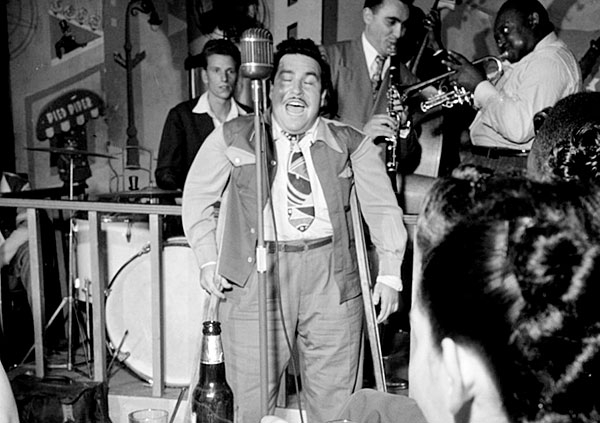| Columns Retired Columns & Blogs |
I was unaware of Doc until I did a google search, which reveals a long list of collaborations with a lot of artists I do know well. Doc's was the funeral where Jimmy Scott's career restarted, and as I bought the Scott album All The Way in high-res last year (on a Stereophile recommendation), I'm thinking to pursue looking into Doc Pomus some more. Ideally I'd like some recordings of his best work as a blues singer, but those may not be available.

 It was Joe Turner himself who inspired Pomus to take songwriting seriously. They met in 1951, a decade after Turner's recording of "Piney Brown Blues" had turned young Jerome Felder into a staunch admirer, and Pomus wrote a few songs for Turner. But what made Pomus's career really fly was his association with Mort Shuman, a pianist and gifted melodist who was just 18 when he was introduced to his 30-year-old collaborator-to-be. "By the end of 1955, Mort had become Doc's shadow," notes Halberstadt, who tracks the pair's rise as they wrote for singers ranging from Italian-American Philadelphians with princely looks—fans knew Fabian Forte, James Ercolani, Francis Avallone, and Robert Ridarelli as, respectively, Fabian, Jimmy Darren, Frankie Avalon, and Bobby Rydell—to the Memphis monarch himself. During Elvis Presley's movie-making years, gold from the King's coffers spilled liberally on Pomus and Shuman.
It was Joe Turner himself who inspired Pomus to take songwriting seriously. They met in 1951, a decade after Turner's recording of "Piney Brown Blues" had turned young Jerome Felder into a staunch admirer, and Pomus wrote a few songs for Turner. But what made Pomus's career really fly was his association with Mort Shuman, a pianist and gifted melodist who was just 18 when he was introduced to his 30-year-old collaborator-to-be. "By the end of 1955, Mort had become Doc's shadow," notes Halberstadt, who tracks the pair's rise as they wrote for singers ranging from Italian-American Philadelphians with princely looks—fans knew Fabian Forte, James Ercolani, Francis Avallone, and Robert Ridarelli as, respectively, Fabian, Jimmy Darren, Frankie Avalon, and Bobby Rydell—to the Memphis monarch himself. During Elvis Presley's movie-making years, gold from the King's coffers spilled liberally on Pomus and Shuman.





































